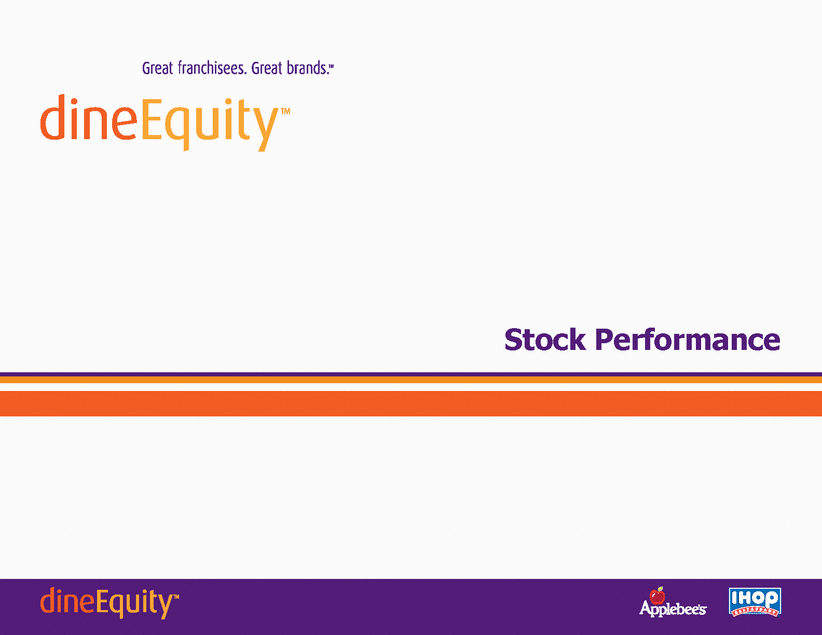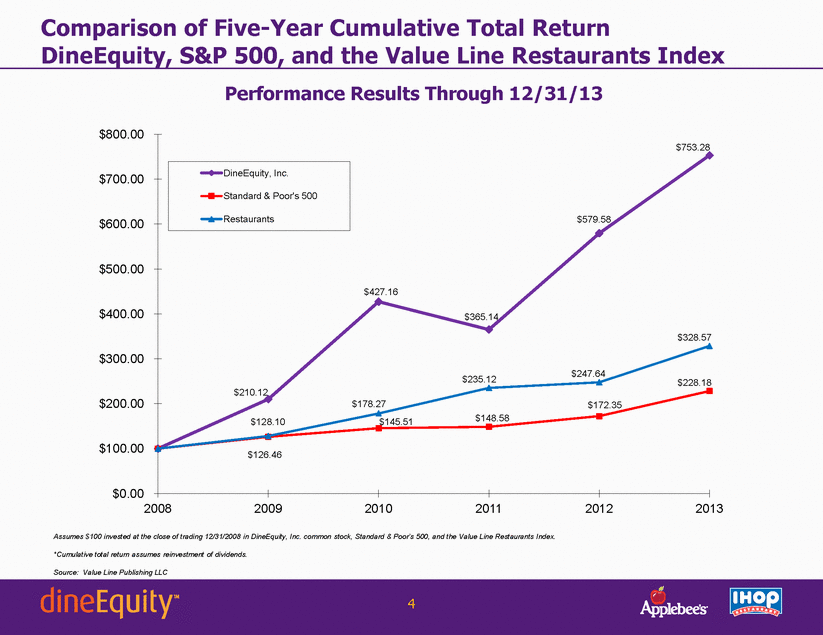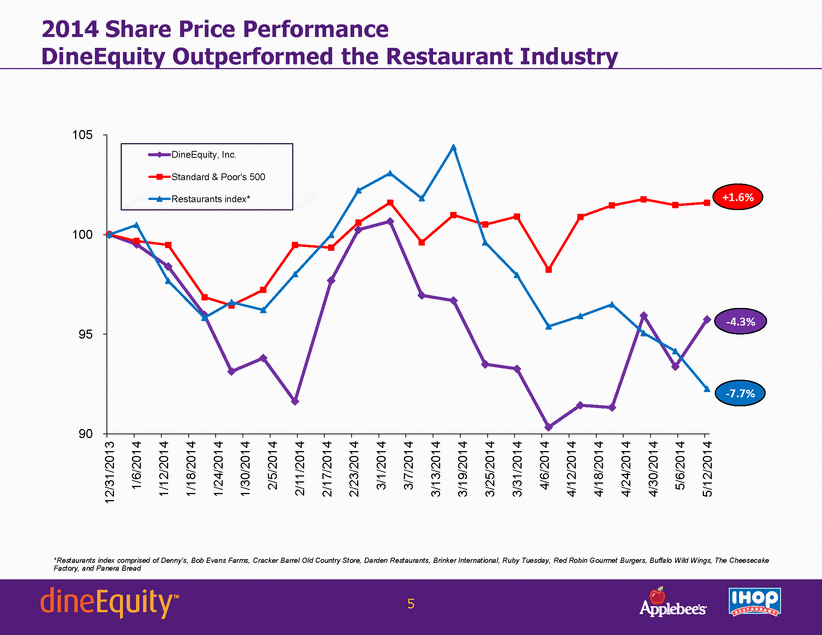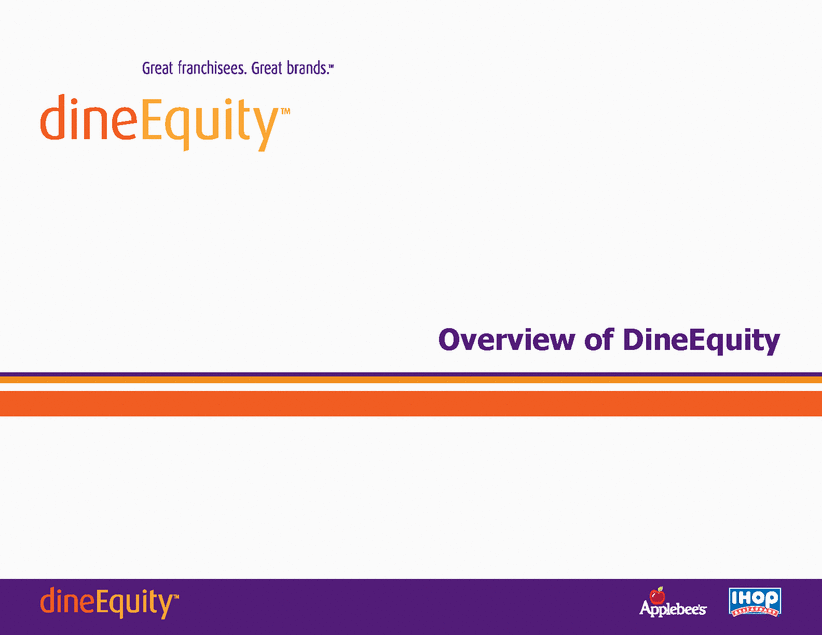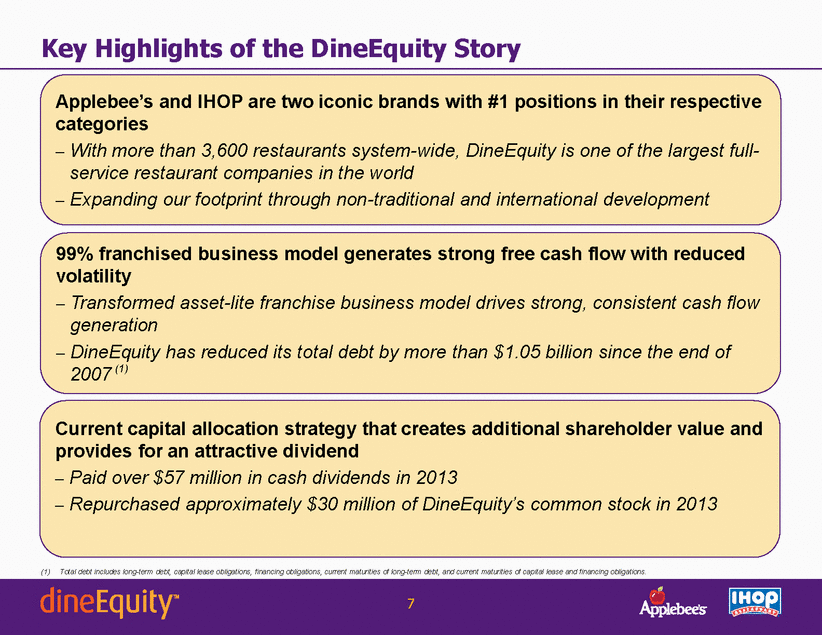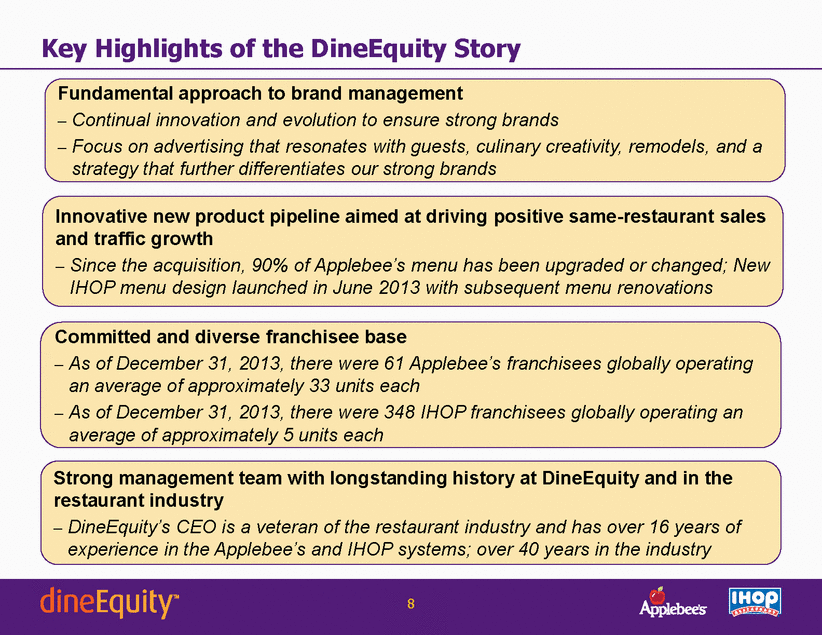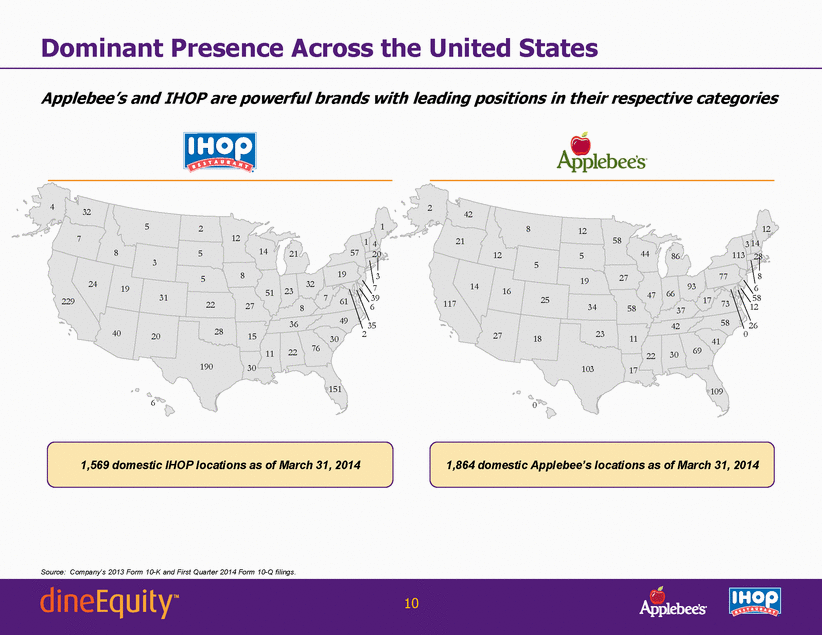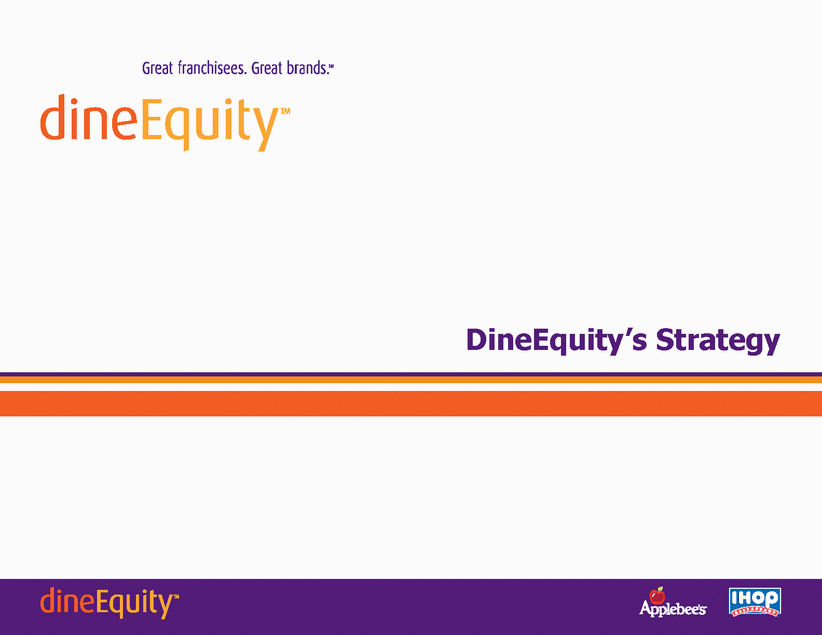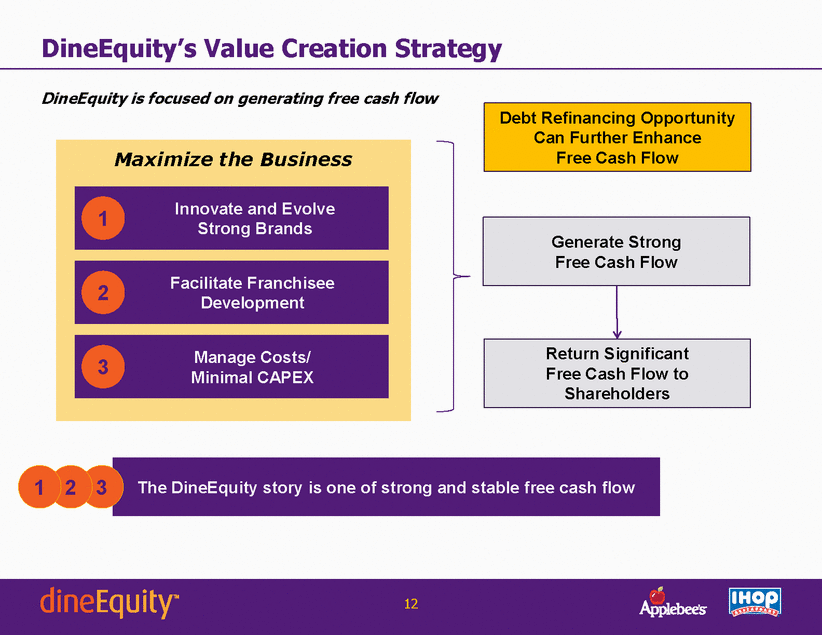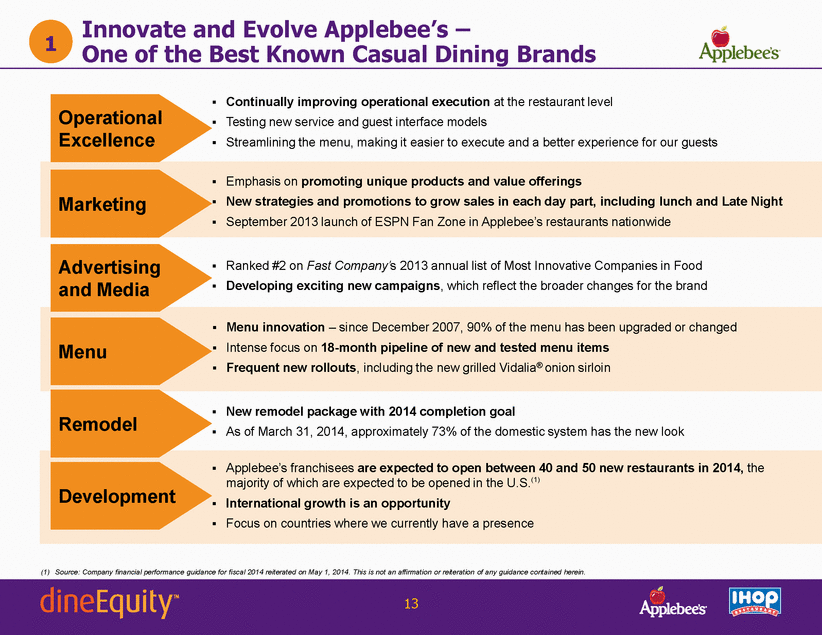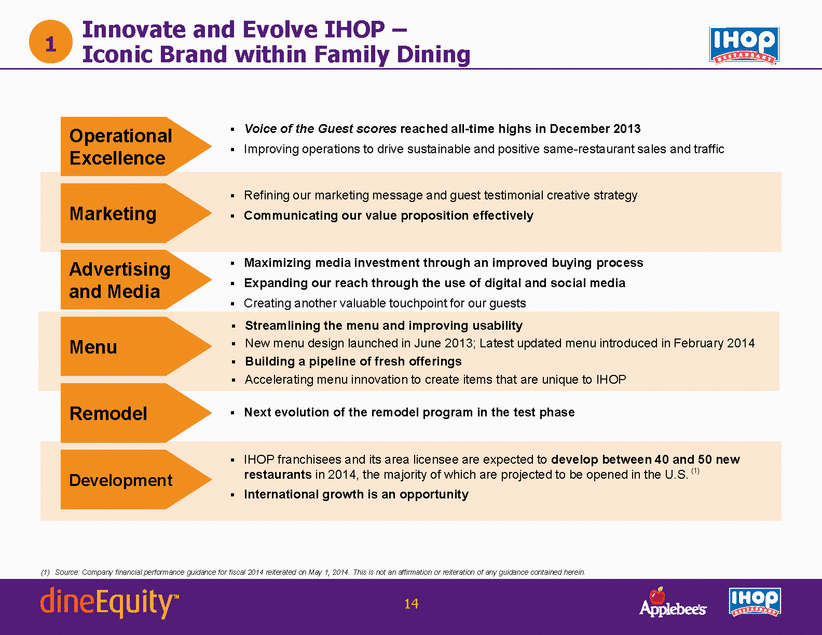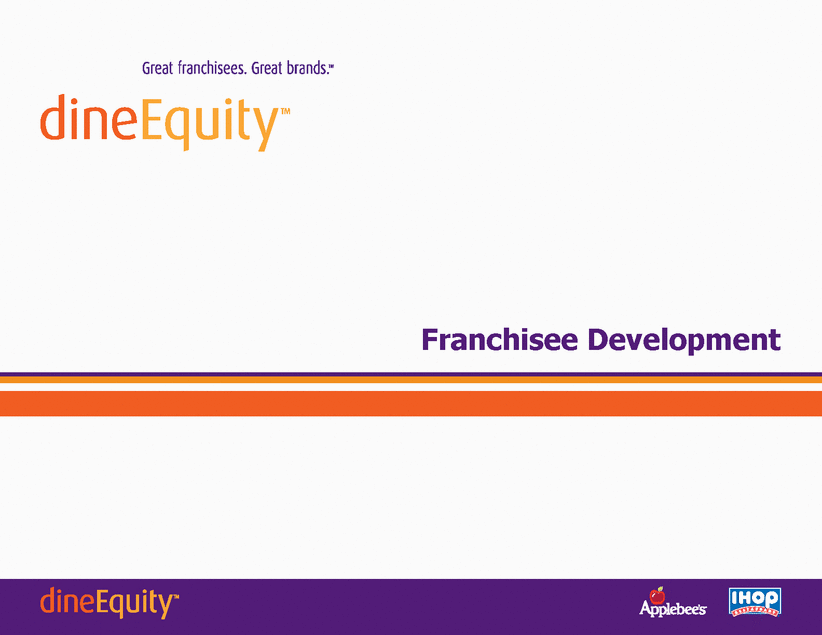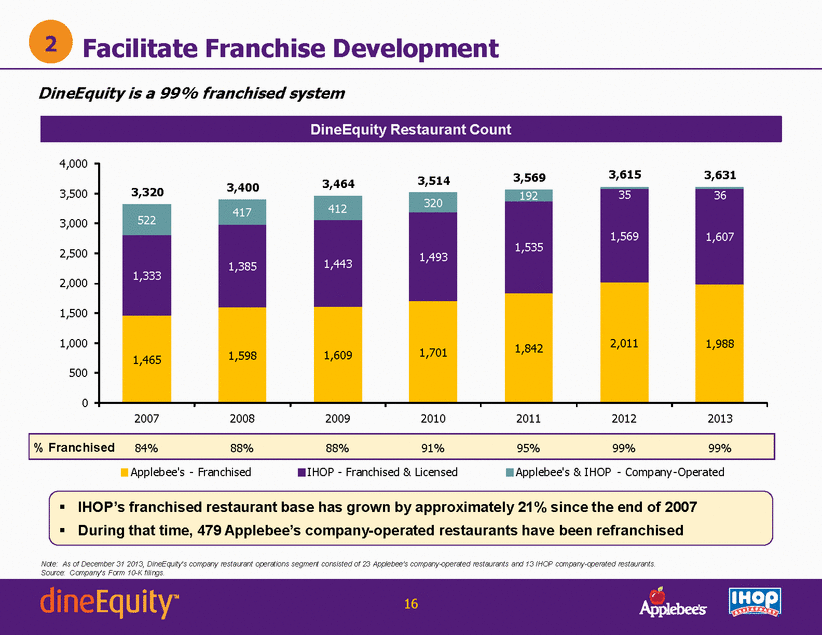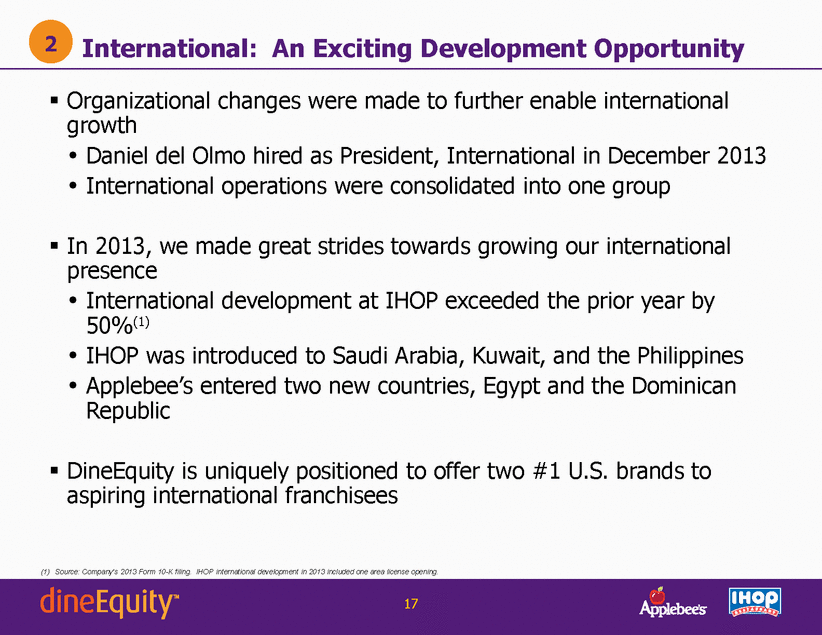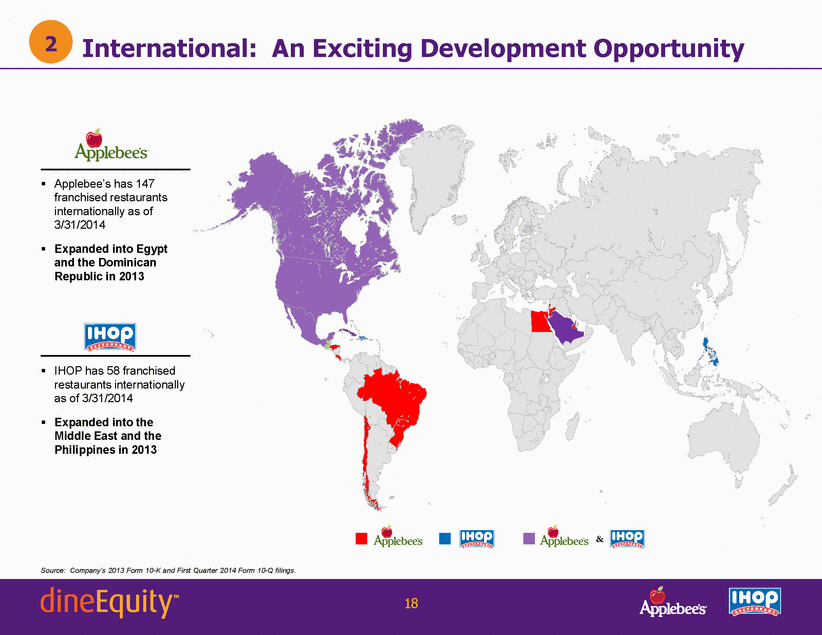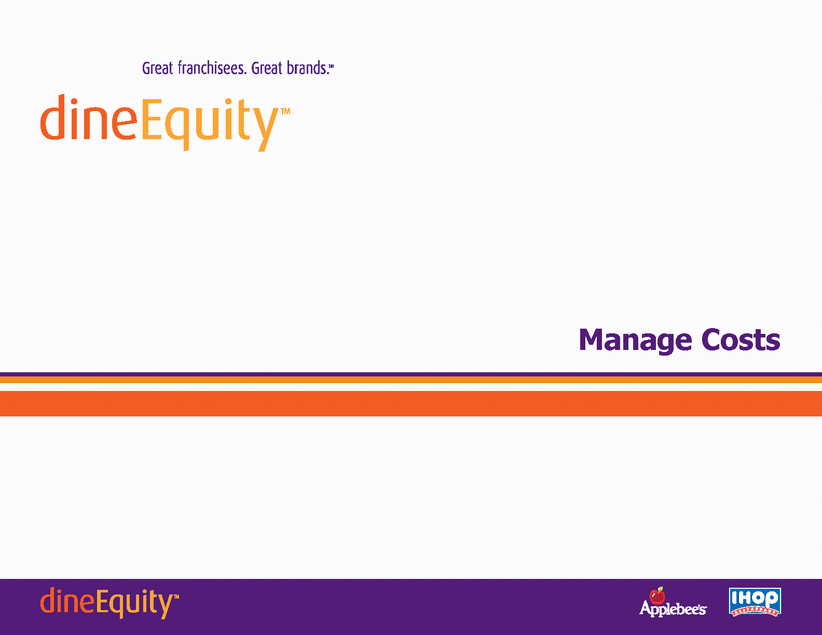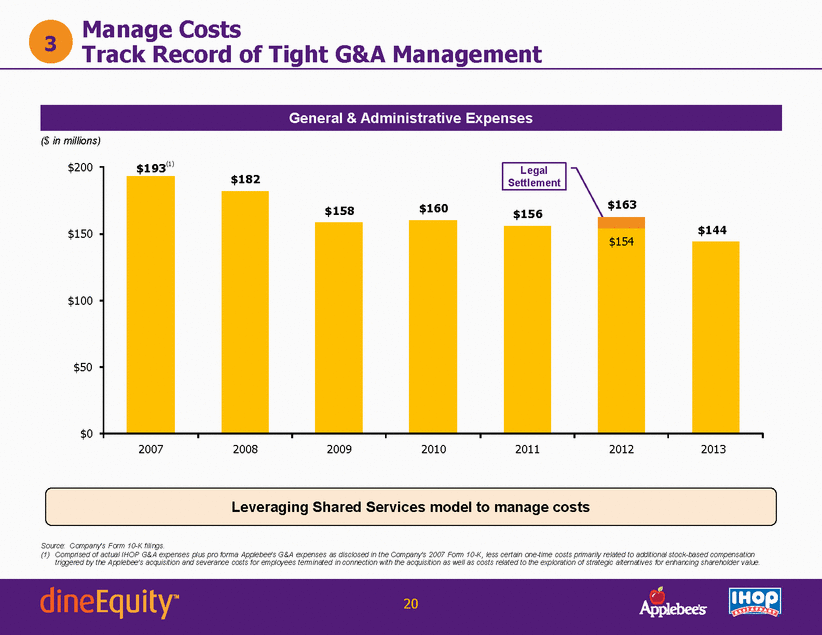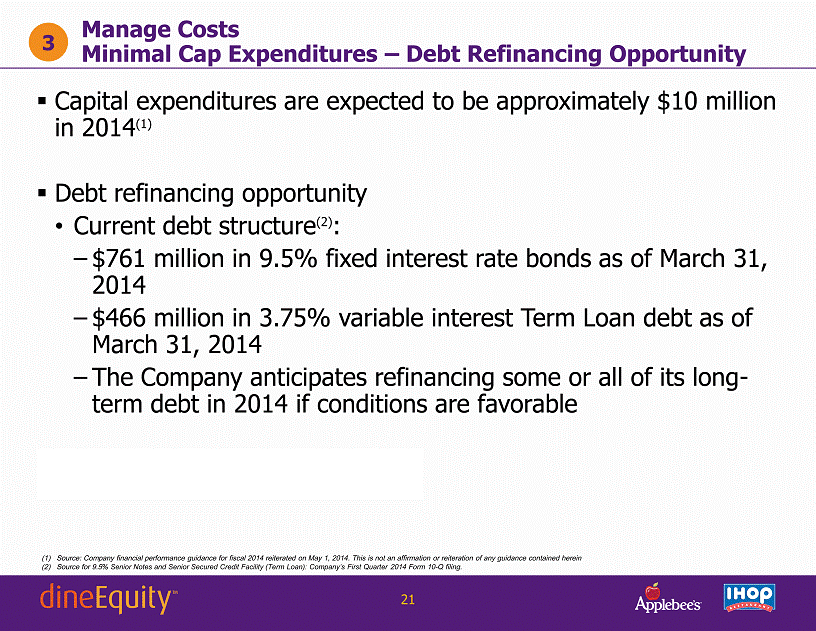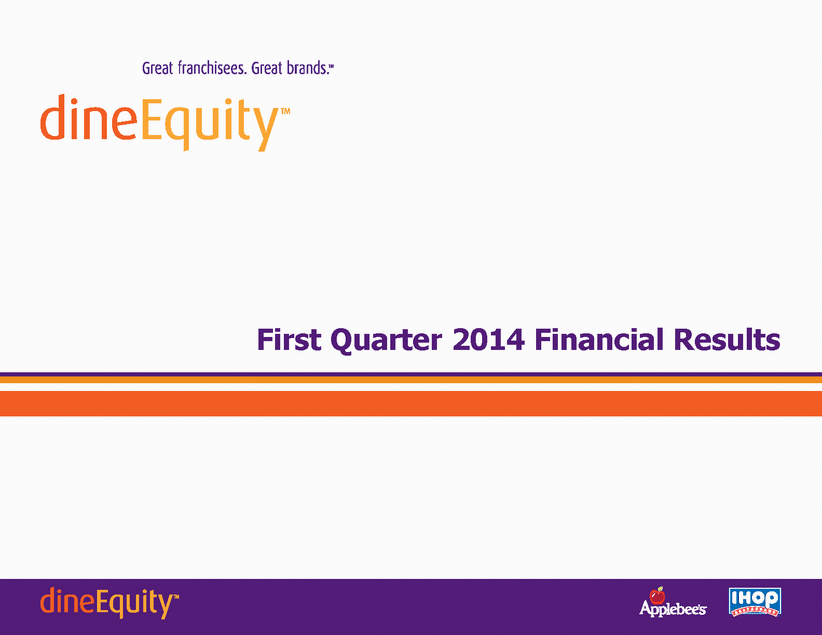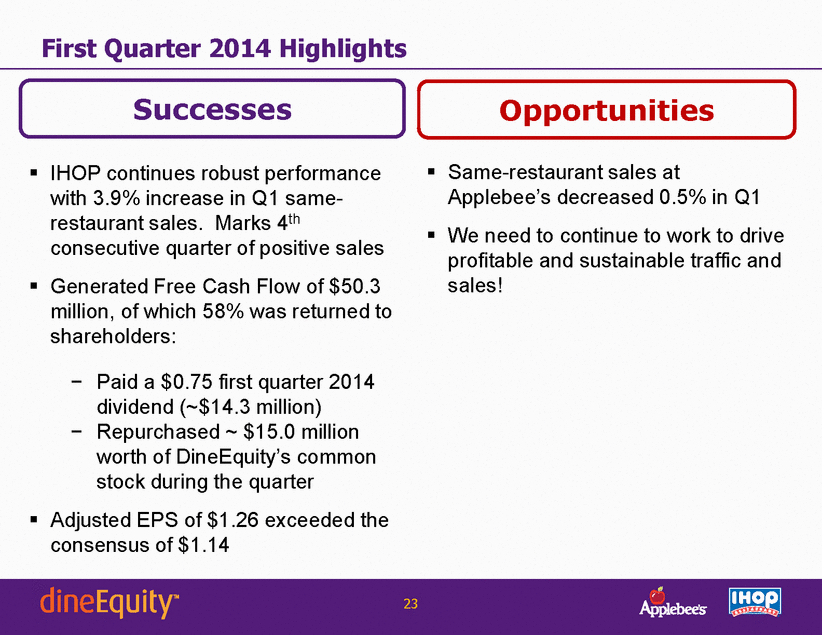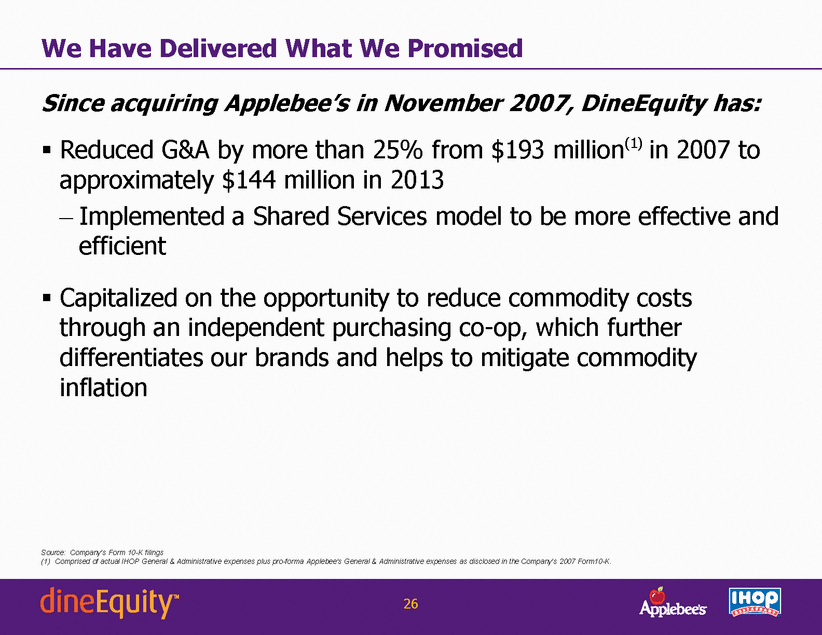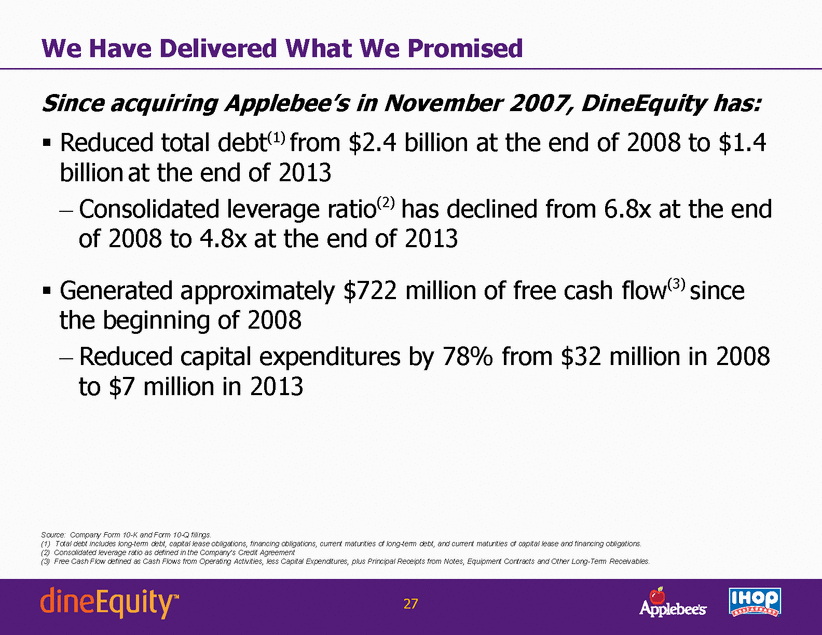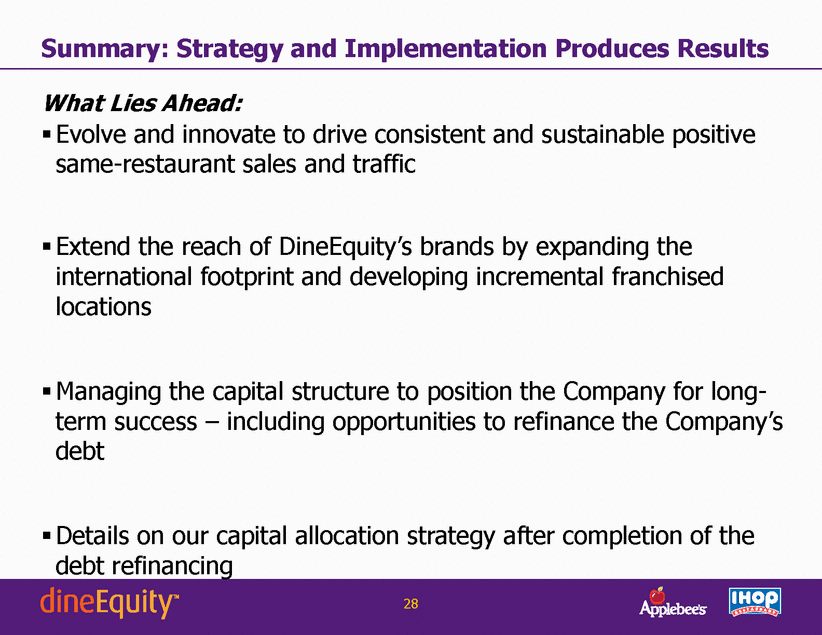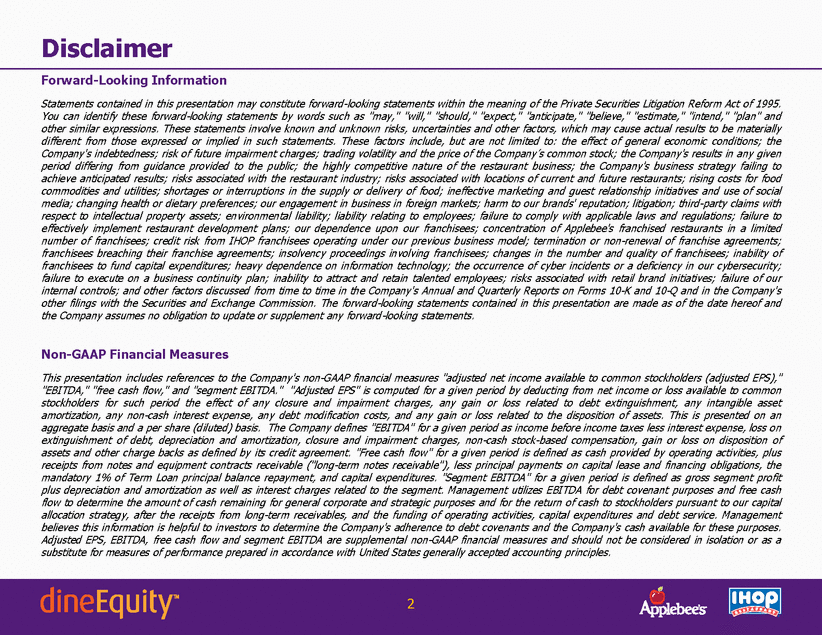
| Forward-Looking Information Statements contained in this presentation may constitute forward-looking statements within the meaning of the Private Securities Litigation Reform Act of 1995. You can identify these forward-looking statements by words such as "may," "will," "should," "expect," "anticipate," "believe," "estimate," "intend," "plan" and other similar expressions. These statements involve known and unknown risks, uncertainties and other factors, which may cause actual results to be materially different from those expressed or implied in such statements. These factors include, but are not limited to: the effect of general economic conditions; the Company's indebtedness; risk of future impairment charges; trading volatility and the price of the Company’s common stock; the Company's results in any given period differing from guidance provided to the public; the highly competitive nature of the restaurant business; the Company's business strategy failing to achieve anticipated results; risks associated with the restaurant industry; risks associated with locations of current and future restaurants; rising costs for food commodities and utilities; shortages or interruptions in the supply or delivery of food; ineffective marketing and guest relationship initiatives and use of social media; changing health or dietary preferences; our engagement in business in foreign markets; harm to our brands' reputation; litigation; third-party claims with respect to intellectual property assets; environmental liability; liability relating to employees; failure to comply with applicable laws and regulations; failure to effectively implement restaurant development plans; our dependence upon our franchisees; concentration of Applebee's franchised restaurants in a limited number of franchisees; credit risk from IHOP franchisees operating under our previous business model; termination or non-renewal of franchise agreements; franchisees breaching their franchise agreements; insolvency proceedings involving franchisees; changes in the number and quality of franchisees; inability of franchisees to fund capital expenditures; heavy dependence on information technology; the occurrence of cyber incidents or a deficiency in our cybersecurity; failure to execute on a business continuity plan; inability to attract and retain talented employees; risks associated with retail brand initiatives; failure of our internal controls; and other factors discussed from time to time in the Company's Annual and Quarterly Reports on Forms 10-K and 10-Q and in the Company's other filings with the Securities and Exchange Commission. The forward-looking statements contained in this presentation are made as of the date hereof and the Company assumes no obligation to update or supplement any forward-looking statements. Non-GAAP Financial Measures This presentation includes references to the Company's non-GAAP financial measures "adjusted net income available to common stockholders (adjusted EPS)," "EBITDA," "free cash flow," and "segment EBITDA." "Adjusted EPS" is computed for a given period by deducting from net income or loss available to common stockholders for such period the effect of any closure and impairment charges, any gain or loss related to debt extinguishment, any intangible asset amortization, any non-cash interest expense, any debt modification costs, and any gain or loss related to the disposition of assets. This is presented on an aggregate basis and a per share (diluted) basis. The Company defines "EBITDA" for a given period as income before income taxes less interest expense, loss on extinguishment of debt, depreciation and amortization, closure and impairment charges, non-cash stock-based compensation, gain or loss on disposition of assets and other charge backs as defined by its credit agreement. "Free cash flow" for a given period is defined as cash provided by operating activities, plus receipts from notes and equipment contracts receivable ("long-term notes receivable"), less principal payments on capital lease and financing obligations, the mandatory 1% of Term Loan principal balance repayment, and capital expenditures. "Segment EBITDA" for a given period is defined as gross segment profit plus depreciation and amortization as well as interest charges related to the segment. Management utilizes EBITDA for debt covenant purposes and free cash flow to determine the amount of cash remaining for general corporate and strategic purposes and for the return of cash to stockholders pursuant to our capital allocation strategy, after the receipts from long-term receivables, and the funding of operating activities, capital expenditures and debt service. Management believes this information is helpful to investors to determine the Company's adherence to debt covenants and the Company's cash available for these purposes. Adjusted EPS, EBITDA, free cash flow and segment EBITDA are supplemental non-GAAP financial measures and should not be considered in isolation or as a substitute for measures of performance prepared in accordance with United States generally accepted accounting principles. |


